#parisstory
Explore tagged Tumblr posts
Text
“Those with nerves exhausted by work would relax there, following the restful example of those still waters, and, to whoever entered it, the room would provide a refuge of peaceful meditation in the middle of a flowering aquarium.”
—Claude Monet, 1909

#france#french#hopecollege#hopecollegeparis#paris#parisfrance#parisstories#travel#travelblog#monet#claudemonet#museeorangerie#waterlilies#art#modernart
10 notes
·
View notes
Text
best. final exam. ever. (a blog detailing the scavenger hunt final exam for Paris 2019)
Today we did our final exam for this May Term, and I have to say: BEST. EXAM. EVER. Exploring new places in Paris? Yes please! We were given some expectations and then a list of sites to visit with a partner, and then left to figure out which route we would like to go! I’m glad I like directions and navigating because today was a whole lot of that.
(Note: I posted the pictures with the locations tagged on my Instagram, @kyliegtravels, if you would like to see exact locations. They are all under my “final exam” highlight.)

Picture from Paris Stories at Hope College Facebook
The following is the expectations/rules we were given this morning (bright and early at 8am) for the day.
Objective:
Demonstrate proficiency in Pairs by:
1. Ability to successfully navigate mass transit. You must use the metro and/or the buses to get around. NO UBER.NO TAXI.
2. Referencing only your Paris Pratique and Michelin Guide for directions—not cell phones. Should it be revealed that you used your cell phone for navigational purposes, you and your partner will receive an automatic failing grade on the exam.
3. Find historically/culturally significant locations per the list provided, and experience them.
4. Do so in an efficient way (within the 6 hour limit).
5. We encourage you to take a break for lunch, snacks, etc.
Mechanics:
· 8 am start time from the Citadines Place d���Italie
· You may NOT use computers and phones to plan the best route. Your sites are not listed in any geographical “order.”
· 2pm arrival (not earlier) at the professors’ apartment: rue Watteau
o Please bring your laptops and your Michelin Green Guide to rue Watteau. (Pick these at the Citadines before arriving at rue Watteau)
· YOU MUST VISIT EACH SITE WITH YOUR PARTNER
· Each group must take a photo at each site, and slow down a bit, and think about the space.
· Back at the professors’ apartment (or if you finish early, please feel free to begin working), make Tumblr posts documenting your groups journey—including each site visited.
o Divide the blog posts between partners/group members.
o If you reference a source, please be sure to include the citation. Your Michelin Guide is a great reference.
After reviewing these expectations, we were given our partners and the list of our sites.
Group 1: Rousseau (Emily and Kylie)
1. In front of a street sign on rue Jean-Jacques Rousseau (1er)
2. On the steps of the La Madeleine (8e), Place de la Madeleine
3. In the Place des Vosges (3e)
4. In the center of the Arenes de Lutece (5e), 49 rue Monge
5. The exterior façade of St-Etienne-du-Mont church (5e), Place Sainte-Genevieve
6. Galerie Vivienne (covered passage, 2e), 4 rue des Petits-Champs
7. Inside the Gare Saint-Lazare SNCF (big trains) train station, the one painted often by Monet (8e), 13 rue d’Amsterdam
8. Place Edith Piaf (20e)
9. Temple of Sibyl, Parc des Buttes Chaumont (19e)
Emily and I went to work to figure out what the best way to find each of these places would be. We used our Michelin Green Guides and our Paris Pratique to craft our path. The following is the path we followed to complete our final exam. We started out by taking line 7 (La Courneve) to Place Monge to our first site.


Arenes de Lutece:
We decided to go here first because it was the closest to our hotel, and we had seen signs for it in the line 7 Metro. It was pretty easy to find when we came up out of the metro because there were signs for it, so I expected more people to be there. We were the only people there. I’m not sure if that’s because we were there at 8:15am. The Arenes De Lutece and is located in the Latin Quarter. It is an amphitheater and could originally hold 15,000 people. It is one of the only surviving evidence of the Roman period in Paris. It was interesting to see that apartment buildings have been built over part of the amphitheater. We enjoyed appreciating the calm arena before we set off on the rest of our day. We decided earlier to walk to the next site because it was in the same arrondisement and it didn’t make sense to take a Metro.
Source: https://www.parisinfo.com/musee-monument-paris/71451/Arenes-de-Lutece-et-square-Capitan


St-Etienne-du-Mont Church and Place Sainte Genevieve:
We walked down some winding streets, which is the character of the Latin Quarter to find St-Etienne-du-Mont Church. I’m not going to lie, this was pretty easy to find because it is so distinguishable. It was cool to see the Pantheon next to it too. In fact, in 1744 King Louis XV replaced the Saint Genevieve Abbey with the Pantheon. The abbey was looted and burned in the Revolution. It was attached to what is now called St-Etienne-du-Mont Church. This is why the place near the church is called the Place Sainte Genevieve. I had never heard of this church before and] the façade of it is quite grandiose, Renaissance style. It was restored after the revolution and actually slants left due to the shape of the ground. According to the churches website, it is a product of a transition period between gothic and Renaissance styles. I think this is for sure true because of what we have learned about the two styles in class. Another interesting thing about this area is that the original wall fortification is still present in some areas and we just happened to walk by, how cool! We then continued our walk to the Cardinal Lemoine station and took line 10 (Gare d’Austerlitz) to Gare d’Austerlitz and transferred to line 5 (Bobigny), exiting at Bastille.
Source: https://www.saintetiennedumont.fr/en


Place de Vosges:
Check out Emily’s blog for this entry at. https://thepariscollective.tumblr.com/tagged/scavengerhunt!
After exploring Place de Vosges, we walked to the Chemin Vert Station and took line 8 (Balard) to Republique and transferred to line 3 (Galleieni) and got off at Porte de Bagnolet.


Place Edith Piaf:
I was surprised because we popped out of the underground Metro station into a market and the statue of Edith Piaf was on our right. Emily has the entry for this site too! We enjoyed a walk through the market before embarking to our next site, which was the one we knew the least about. We went to the Gambetta station and took line 3 (Levallois) to Pere Lachaise, then transferred to line 2 (Porte Dauphine) and got off at Belleville.


Temple of Sibyl, Parc des Buttes Chaumont:
We found the Parc des Buttes Chaumont easily In our Paris Pratique, but the Temple of Sibyl wasn’t labeled so we ended up looking it up in our Michelin guide while on the Metro and finding a map of the entire Parc. It was quite a hike to find this site (which makes sense because the 19this near Montmatre) and it was definitely not a tourist area so it wasn’t labeled from the streets. I think this may have been my favorite site we visited. In 1860, Napoleon III integrated the areas surrounding the park into the city, creating a need to make these areas “Parisian.” Haussmann played a role in the installation of this park, a large English-style park, along with the Bois de Boulogne and the Bois de Vincenne. Adolphe Alphand created this park by buying 25 hectagres of the Buttes Chaumont. Originally this had been quarries, but they were abandoned in the mid 1800s. It was a three year process to form the park from construction of artificial cliffs (the one in the lake where the temple is located is the most prominent) to digging trails both steep and flat to planting new species. The lake was created by using a local water tank. The park was inaugurated with the Universal Exhibition of 1867, when Napoleon III wanted to show off his newly Haussmannized capital. I would love to go back and explore this park when I have more time because it looked like there was lots of trails and different paths to explore. Emily has a little more about the Temple of Sibyl on her blog if you would like to read more about that. We hopped on the 7b (Pre-St.-Gervais) and got off at Place des Fetes, then got on line 11 (Chatlet) to Arts et Metiers, and then line 3 (Levallois) to Bourse.
Source: https://www.histoires-de-paris.fr/parc-buttes-chaumont/


Galerie Vivienne:
I knew from our assignment sheet that this was a covered passage, but as we stepped into it, it was much more extravagant than I expected. It felt like I was in a department store because the ornamentation of the ceiling or the glass roof and the detailed floor felt too special to just be a street passage. It was built in 1823 and now houses a cute bookstore, boutiques of various kinds, food shops, and probably more that we didn’t see because the spectacle of the passage itself was so beautiful. We walked through it and on to Rue Etienne Marcel to find our next site.
Source: https://en.parisinfo.com/paris-museum-monument/100272/Galerie-Vivienne

Rue Jean-Jacques-Rousseau:
This is the street our group was named after! Check our Emily’s blog to understand it’s importance. We walked from here to the nearby Etienne Marcel Metro stop. We got on line 4 (Cligancourt) to Strasbourg-St. Denis and transferred to line 8 (Balard) for the Madeleine stop.


On the steps of the La Madeleine, Place de la Madeleine:
You would think finding the front of the church would be easy, but it turns out we got turned around. We got out of the Metro and went towards the back of the church, and got super confused because it was locked. Not to mention, it was under construction, so that might also have added to the confusion of where the front was and it also doesn’t look like other churches in Paris, so we were a little shocked by that. Don’t worry though, we wandered around the place and found the front steps of the church. After looking into this place later, it is now well known for the little cookie/cakes that Marcel Proust made famous, but there is a deep history of the church. The church is situated between Place de la Concorde and the Palais Garnier. It is different than a religious building because Napoleon wanted it to be a pantheon to honor his armies. The iconic Corinthian colomns were under construction, but we still got to see some of them. We also saw many signs for concerts, which the church hosts regularly. From here we walked to our last location. We followed Rue Torchet towards Printemps and then Rue de Havre straight to the station.
Sources: https://en.parisinfo.com/transport/73127/Place-de-la-Madeleine,https://en.parisinfo.com/paris-museum-monument/71158/Eglise-de-la-Madeleine


Gare St. Lazare:
Emily wrote about this site too, but I want to mention how modernized this building was. I expected it to be more like what Monet painted, yet instead, it felt more like a mall. We had a hard time getting a picture inside of ourselves without it looking like a mall, so we took a few pictures inside and headed outside to get our selfie with the iconic sign.

Whew! That was a lot! We started at 8am and got done early (noon) before we had to be at our professors’ apartment at 2pm. Since we had time, we decided to pull up Dr. Janes’ food recommendations list and found Cosi, a sandwich shop in the 6th. It was fun to celebrate completing our exam with some delicious sandwiches. Then, we went to our professors’ apartment for a delicious spread and to work on our blog posts. I want to go back to so many of these places because we were on such a timed schedule today! I look forward to revisiting these places someday and knowing the history of them because I took an exam by finding them. This class was such a cool experience I never imagined myself doing after finishing my first year of college, but I’m so glad I did. My professors are absolutely amazing and I’m so grateful for them. They’ve given us such great guidance and tours at places around the city, but also the independence to wander and explore. I will never forget this trip and it was such a fun way to wrap it up with a whirlwind scavenger hunt of such a beautiful city.
4 notes
·
View notes
Photo

A little rain can do wonders to how a city looks! . . . . . . . . . . . #pariscity #parisvisit #parisgram #paris #parisjetadore #parisstories #parisianevenings #rainyparis #parisjetaime #pariswalks #chouette_paris #secretsdeparis #secrets_de_paris #chouetteparis #parisianstreets #arcdetriomphe #parissites #parisienne #parisian #franceobviously #bestofparis #parisatnight #parissites (at Paris, France) https://www.instagram.com/p/Cic4zDXoKQ0/?igshid=NGJjMDIxMWI=
#pariscity#parisvisit#parisgram#paris#parisjetadore#parisstories#parisianevenings#rainyparis#parisjetaime#pariswalks#chouette_paris#secretsdeparis#secrets_de_paris#chouetteparis#parisianstreets#arcdetriomphe#parissites#parisienne#parisian#franceobviously#bestofparis#parisatnight
0 notes
Text
A Parisian Scavenger Hunt
Today we had our “final exam” for the Paris May term! We were all split into small groups and given a series of locations across the city that we had to find using only our Paris Pratique maps and the Metro. Before setting off, we formulated a plan of how we wanted to get from place to place. We decided to go the farthest away first (the 18th arrondissement) and then make our way back through the 9th, 8th, 7th, 1st, and 6th, which worked out perfectly! We zig-zagged back and forth a little bit, but we didn’t have any problems getting anywhere, and best of all, we had fun searching for everything!
The Bateau-Lavoir, where Picasso painted “Les Demoiselles d’Avignon” (18e)
Our group stumbled through a small public square and up too many steep stairs to find the Bateau-Lavoir. Also called "The Boat Wash-house,” this small building was both a place for artists to meet and build upon ideas but is most famously the place where Picasso painted Les Demoiselles d’Avignon. Though one of the smallest holes-in-the-wall of Monmarte, this building essentially was the birthplace of a lot of the art that not only made history but inspired much of the contemporary art we see to this day.

Art Deco stained-glass ceiling of Galeries Lafayette (9e)
The Galeries Lafayette was established in 1893 originally as a small novelty store, though it quickly grew to become a giant department store when the owners purchased the entire building where their store was located. The breathtaking 43-meter high, Neo-Byzantine dome was designed by glass artist Jacques Gruber and is reminiscent of the stained-glass you might find in the churches around Paris.

The Gare Saint-Lazare SNCF train station, the one painted so often by Monet (8e)
The Gare Saint-Lazare is one of the largest and busiest railway stations in Paris and was designed by architect Juste Lisch in 1873. The station was an attractive subject for numerous artists during the Impressionist period, including Manet, Monet, and Caillebotte. Today the station’s passenger hall also features a three-level shopping mall and handles around 275,000 passengers every day.

Pont Alexandre III (7e-8e)
Pont Alexandre III was built for the Universal Exposition in 1900. Its name comes from the alliance France made with Russia during the Third Republic, and it is known for its beauty. There are four pillars that are on the bridge that have golden statues at the top of them. These pillars represent sciences, art, commerce, and industry.

The Wall of Peace in the Parc du Champ de Mars (7e)
The Wall of Peace is a wall of glass that is located in the 7th arrondissement. This wall was created in 2000 to commemorate the new millennium. It has the word “peace” inscribed on it in multiple different languages, ranging from French to Chinese. However, there is a controversy about whether the Wall of Peace should be kept or removed. It was originally only supposed to be up for four months but instead has been up for 18 years. For now, the wall is still standing, though is surrounded by a tall fence.

Place Dauphine (1e)
Place Dauphine is a small square that would be incredibly easy to miss due to its size and the fact that it is sandwiched between two streets and a number of buildings. But what makes this quaint little area full of gravel, trees, and benches so special is its location in regards to the Seine. Initially created in 1607, this historically public square was a treat to discover as we would have never seen it otherwise.

“Le Bateau Ivre” (or “The Drunken Boat”) wall poem by Rimbaud near the Church of Saint Sulpice (6e)
Le Bateau Ivre is a poem written in 1871 by Arthur Rimbaud, who was a famous French poet. This poem is written on the wall of Rue Ferou near the Church of Saint Sulpice in the 6th arrondissement and describes the drifting and sinking of a boat lost at sea. This poem is drawn on this particular wall because Rimbaud wrote Le Bateau Ivre in a cafe nearby when he was only 16 years old.

"Jacob Wrestling with the Angel" and "Heliodones Driven from the Temple" murals by Eugene Delacroix in the Church of Saint Sulpice (6e)
These two gorgeous frescoes by Delacroix were commissioned by the Church of Saint Sulpice to adorn the walls of the Chapel of Holy Angels, the first side-chapel on the right side of the church. Delacroix worked on these murals between 1857 and 1861 and created three in total, the third being Saint Michael Slaying the Dragon. These commissions offered him the opportunity to work on a large scale, like many of the old masters he admired.


7 notes
·
View notes
Text
Home
Reflecting on how little time we have left here as a class, I've been looking back on how those first few days felt for me. One of the first experiences I had in exploring the city was wandering around the 6th arrondissement with friends as we found a bakery and decided to check out les Jardins de Luxembourgas as we ate baguettes the size of our arms.

What is now used to house the senate of France used to be the Palace of Luxembourg. The surrounding gardens were brought to life by Marie Medici in 1612. Originally from Italy, the queen let homesick and wanted the gardens to pay homage to the land she missed.

Learning about this sad inspiration of the gardens spoke to me. My second day being thousands of miles away from both home and my family had been a good day and at that point, I had already noticed the odd sense of peace I had for being in the midst of a non-English speaking city. A two week study abroad trip, however, is not equal to moving to another country in a world where trains, planes, and phones did not exist. The only pieces of my life I could use to empathize with Marie was the disorientation of moving to college.

Walking through the garden, the amount of Parisians sitting in the lawn chairs, taking time to nap and talk to others was comforting. Maybe it's the weather in the Midwest, maybe it's the lack of spaces like this, or maybe it's culture, but the atmosphere of these gardens gave me a peace similar to the feeling I get when I arrive home after a few stressful weeks at college.

I wonder about her choice of the David Conquers Goliath sculpture at the center of the gardens. I want to sit down and talk with her about what specific places in Italy she used as inspiration and why. I'm curious about the palm trees, when and why they are apart of this garden in Paris.

Nobelity and security imply that these gardens would have looked much different for Marie Medici. But I wonder if she would like the way the area is used today. Most of all, I'm curious what it's like for the average Parisian deciding they would like to go for a walk and end at these gardens. I wonder if they, too, can consider it their home.
5 notes
·
View notes
Photo

Paris je t'aime. Et le vin aussi. #parisstories #montmartre #lo #jetaimefort #parisianstyle #parisianlife #bobo #winetasting #longnights #leisuretip #nomadic #kipras (at Paris, France)
#jetaimefort#nomadic#longnights#leisuretip#kipras#parisianlife#montmartre#bobo#parisstories#parisianstyle#winetasting#lo
1 note
·
View note
Text
St. Eustache
This church was unlike any church that i have seen. The layout was completely contradictory to that of Notre Dame and St. Germain. In Notre Dame and St. Germain the layout emulated that of a cross. This one was circular, having chairs that radiated out from a central point in the rotunda.

The inside was extremely ornate as well, housing dozens of murals posted upon the walls and gold accents galore. The murals are huge and incredibly gorgeous, telling stories similarly to the way stained glass tells stories.

While it does have characteristics of gothic architecture, interestingly enough, it also has arches that are more rounded. It does indeed have pitched arches, but there are a fair amount of rounded ones.


I definitely would consider it to be gothic, though it is very unique in the gothic style. There were also tombs that were displayed in a shrine like manner along the walls of the church. The other churches did not have tombs like this tomb of Colbert by any means. It was large, ornate, and very interesting.


The church is also very oddly situated, similar to Saint Chapelle actually. It is similar to Saint Chapelle in that buildings have risen around it making it somewhat difficult to really get to.

Another interesting structural aspect is the large rotunda. This rotunda fills a large, rounded corner and is very low to the ground in comparison to the rounded portion of Notre Dame. Notre Dame of course had flying buttresses though to support the height. There are sections of Saint Eustache that are taller, though they are narrower and more cylindrical.



3 notes
·
View notes
Video
instagram
A propos du quartier de la Goutte D'or #quartierdelagouttedor #lagouttedor #gouttedor #renaud #75018paris #75018 #petiteceinturestreetart #histoiredeparis #parisstory #parishistory #naturebackground #lalignedelapetiteceinture #graffparisien #petiteceintureparisienne #lapetiteceinture #lapetiteceinturedeparis14 #lapetiteceinturedeparis #streetartparis14 #streetartparis14ème #streetartparis14eme #petiteceinture #75014 #75014paris #paris14 #paris14eme #paris14ème #petiteceinture14 #petiteceinture14eme #petiteceintureparis (à La Petite Ceinture Du 14eme) https://www.instagram.com/p/CPfm6_xqsoM/?utm_medium=tumblr
#quartierdelagouttedor#lagouttedor#gouttedor#renaud#75018paris#75018#petiteceinturestreetart#histoiredeparis#parisstory#parishistory#naturebackground#lalignedelapetiteceinture#graffparisien#petiteceintureparisienne#lapetiteceinture#lapetiteceinturedeparis14#lapetiteceinturedeparis#streetartparis14#streetartparis14ème#streetartparis14eme#petiteceinture#75014#75014paris#paris14#paris14eme#paris14ème#petiteceinture14#petiteceinture14eme#petiteceintureparis
0 notes
Photo

@men_of_gospel_official Tribute to @smallrich Act 2 ce vendredi au @moglive_theatreparisstory avec @celinelanguedoc @judithflessel @sarah_isabelle_koper @monaabelofficiel @allnthejeans @__misslaura__ @arianensilulu et moi en guest! Prends ton ticket seulement! #jessicadorsey #music #musique #gospel #gospelmusic #live #concert #guest #menofgospel #paris #parisstory #france #tributetorichardsmallwood https://www.instagram.com/p/Bqr9AfwH7Hx/?utm_source=ig_tumblr_share&igshid=3bq9iu5v2b0q
#jessicadorsey#music#musique#gospel#gospelmusic#live#concert#guest#menofgospel#paris#parisstory#france#tributetorichardsmallwood
0 notes
Photo

Paris Blue Guide + Everyman Paris Stories 📚 #travel #travel #travel #paris #muirhead #travelguide #guide #travelbook #parisstory #reading (at Paris, France)
0 notes
Photo
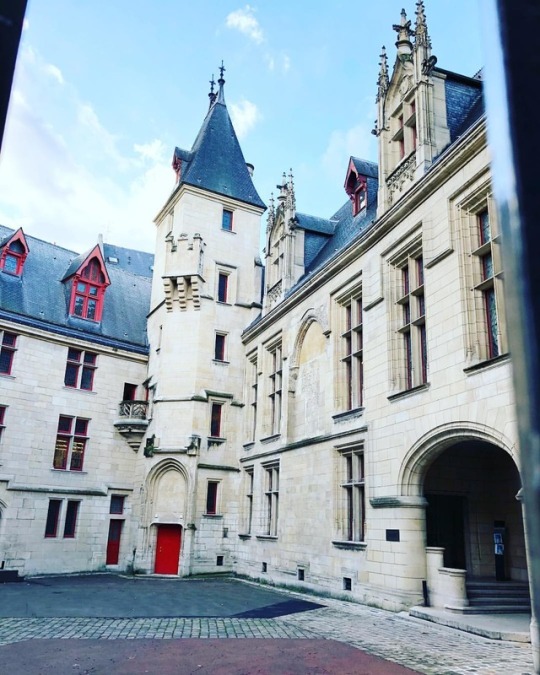
Hôtel particulier des Archevêques de Sens - XVe siècle // #parisnow #parisstory #parisancien #parishistory #instaparis #parisculture #architecture #parisphoto #parisart #instamoments #walkparis (à Hôtel de Sens)
#instamoments#walkparis#parishistory#instaparis#architecture#parisphoto#parisancien#parisstory#parisculture#parisart#parisnow
0 notes
Text
Both, And
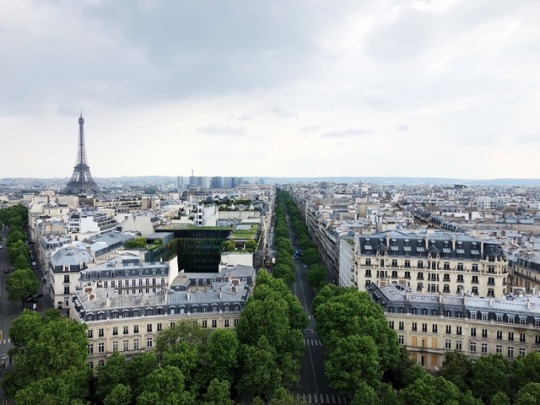
What I love most about Paris so far is that it is a place of juxtapositions. This may seems strange to admire, but this “gray” personality of Paris, how she says she’ll be not black OR white in anything— any opinion, any stance— speaks to my artist heart that always sees the world in the most colourful gray, in an attempt to find the middle ground between extremes.
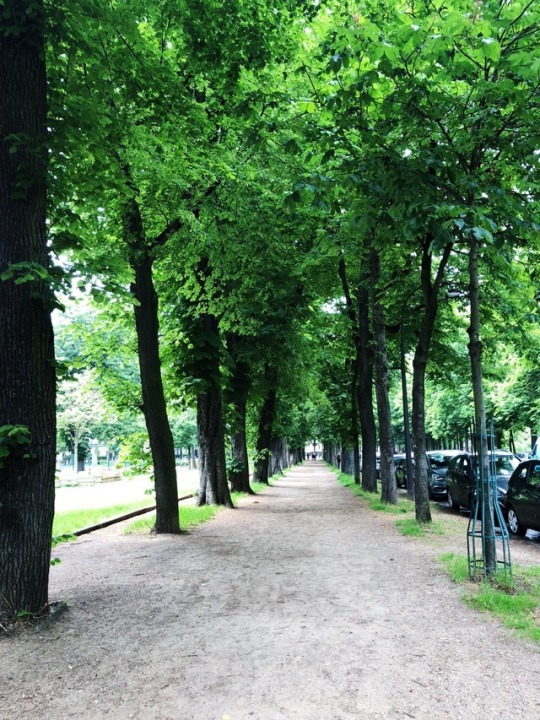
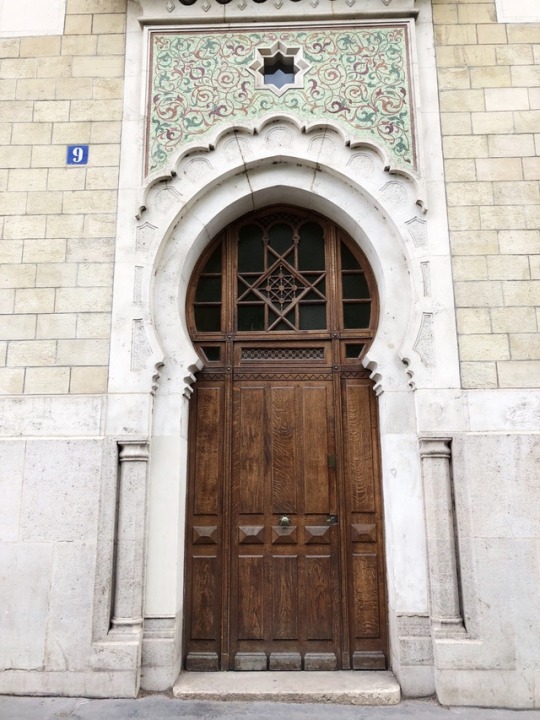
The phenomenon of being a place of such juxtaposition rings odd and inviting—odd mostly because of the differing anecdotes I glimpse being lived out before me on a day to day basis while staying here. Inviting because each of these lived stories almost beckons me to look closer, to pay attention.
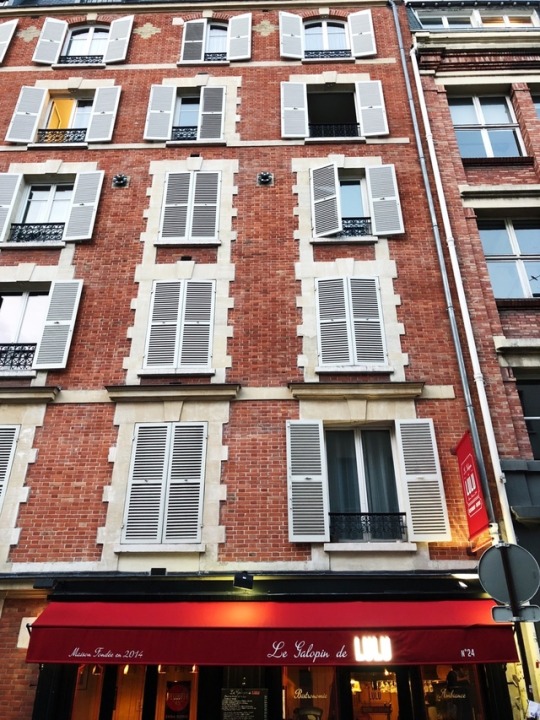
Just the other day we walked along the winding narrow streets of the 11th on the way to dinner (barely enough room for one person, let alone three, on the sidewalks!), while hours before we had stared wide-eyed at the open and majestic Haussmann-style boulevards emanating outwards from the Arc de Triomphe.
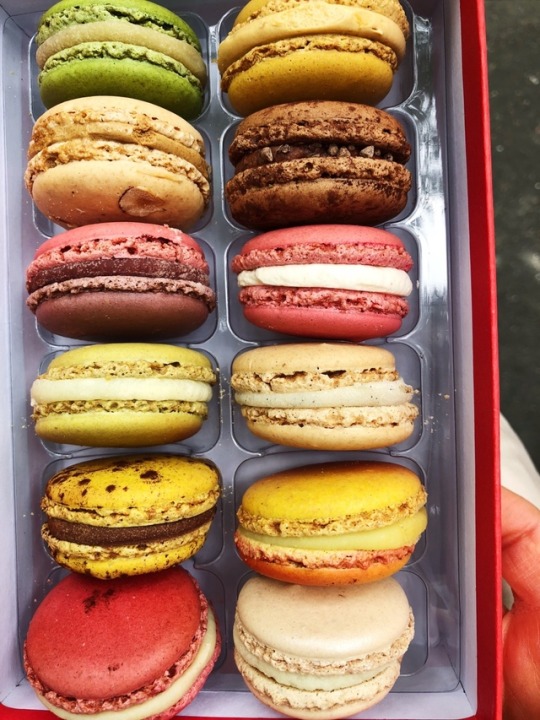
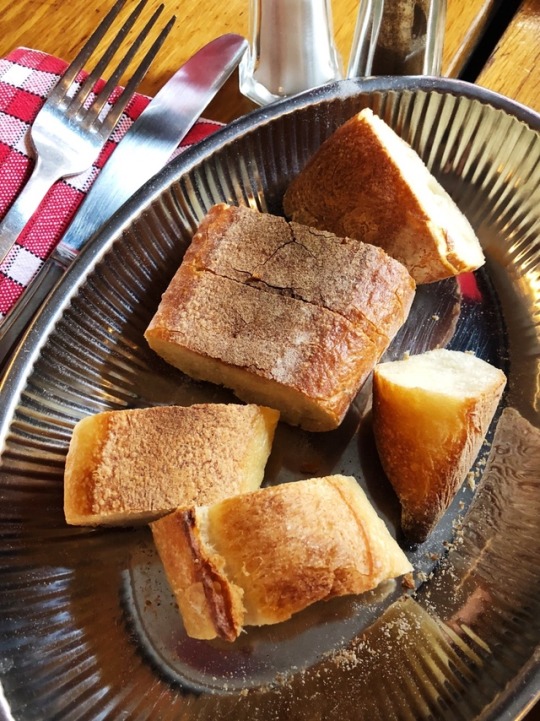
This same day we strolled down the Champs-Élysées and bought perhaps the most expensive (yet also the most delicious) macrons in Paris. The spacious boulevard was packed with shoppers clad in name brand clothes, many tourists, and the poshest shops in all of Paris. As my professor would say, the character of the Champs-Élysées could be described as shi-shi and a bit hoity-toity. We lived this narrative for the afternoon, in a pretend-fantasy-tourist sort of way (my opinions on Champs-Élysées and the wealth of the boulevard and what it stands for in France is a whole different story), yet at dinner later we became the common folk in search of not expensive sweets but simple crusty bread to fill our grumbling stomachs.
At dinner at Les Galopines de Lulu, a quintessentially French bistro, we had the kindest waitor in perhaps all of Paris. He didn’t speak much English, but he took the time to describe each item on the menu and translate it for us. In this tiny bistro, he was the only waitor present and was visibly all over the place, tending to all of the customers, managing multiple tables. One would think he would come to us Americans as stressed out and annoyed at our presence, at our incapability to speak and read French... but he came to us in the most hospitable manner and showed us utmost kindness.
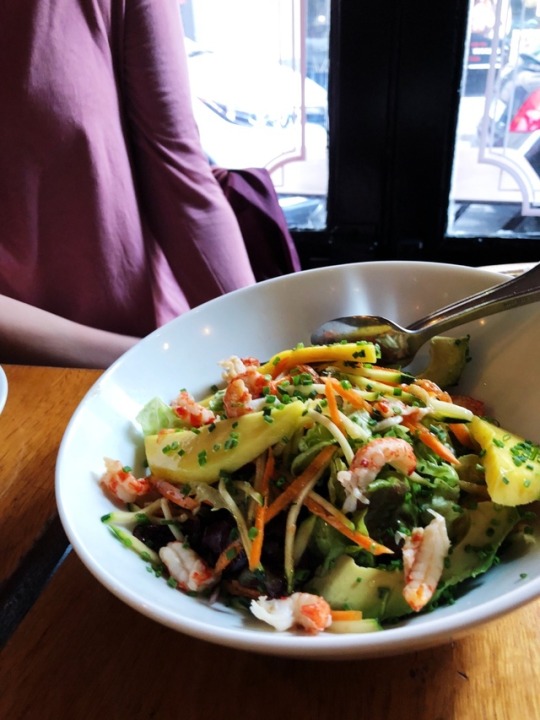
This came as a surprise when just days prior, a friend and I had gone to the grocery store in search of dinner and became the laughing stocks and frustration of all the customers in the shop as we struggled to use the self-check out machines (we thought we knew what we were doing, but it turns out even the self-check outs are different from American ones). We gathered many of the French were annoyed with our floundering, especially one of the store clerks, as he had to come over and assist us at least five times. Outsiders looking in, oui, we are un-French!
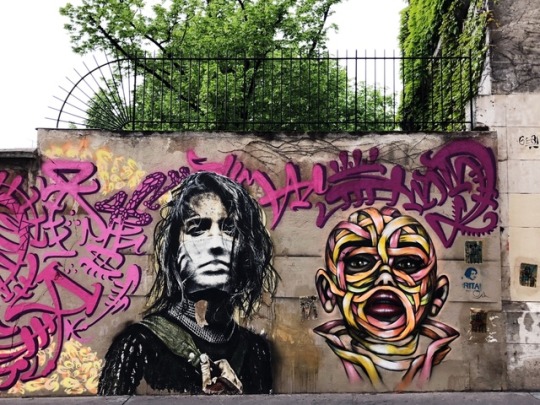
After dinner at Les Galopins, another juxtaposition to our day came about on the metro returning home that evening; we witnessed two homeless people asking for money. They called out loudly on the train while we bumbled along, walking from car to car. Many Parisians stood or sat with eyes glued to the floor, unwilling to help, set on their mission from point A to point B. Yet a few offered a handful of coins to the homeless as they passed by. How can so many in Paris be so wealthy, and also so many be so poor?

I could go on and on... Paris is rich and poor, old and new, quaint and modern, hospitable and cold, filled with young and aged, fast-paced and extremely leisurely, home to many locals and a place of destination for tourists, elegant and dingy, beautiful and ugly, building-filled and park-filled, “French” but also a giant melting pot of people from all over the world, local and metro city, neighbourhood and country, specialised and general, colourful and beige, wide open and small and narrow.
Each day seems to present different moments of juxtaposition and I find myself planted in two stories at once much of the time, fulfilling entirely different, yet related, roles. I am the outsider yet participant in Parisian society, I am confused at what I see must also delighted and inspired.
Through direct experience and immersion in Parisian culture, I am realising Paris comes to me not as a place of either/or, but rather a place of both/and.
Paris walks a fine line between the two ends of the spectrum, doesn’t invite me in all the time to make sense of it all, but every one and a while she whispers and reveals her purpose and personality and I strain to listen. I’ve been here almost a week and I feel as though I have just begun to “meet” Paris, to appreciate her narrative. Already in my mind I am missing her, anticipating my departure, yet kissing the sides of her cheeks in familiar greeting sometime in the future (I can only hope).
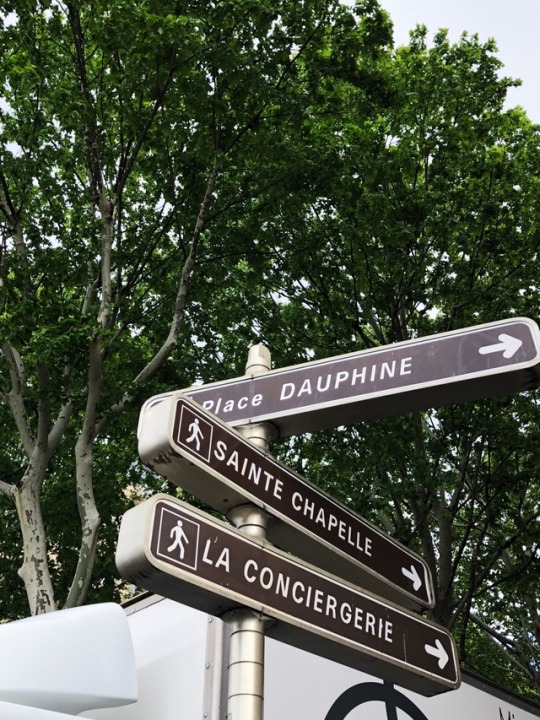
So with the remaining time I have with Paris, I will continue to get to know her. This is all I can do— will it ever stop? Does this “getting to know” ever cease with a particular place? Places forever keep changing, as we do as humans. This concept of continued change between the observed and the observer may even produce a narrative entirely different than what one had experienced a short time prior in a specific place, at a specific time.
Continued change is inevitable, but I must question legacy— what will hold true and constant, if anything, about who Paris is and who I am? I say all this to claim— people and places aren’t that different after all— we may be one in the same: changing, being, welcoming, continuing, living, speaking.
#france#french#hopecollege#hopecollegeparis#paris#parisfrance#parisstories#travel#travelblog#france🇫🇷#paris france#parismayterm#paris2019#parisienne#parisian#parisjetaime
9 notes
·
View notes
Text
Preservation of Perseverance (Entry 5, Museum)
We decided to go to the Memorial de la Shoah, a museum dedicated to remembering the Holocaust. This may have been one of my favorite museums here so far. The art museums are cool and all, but seeing how a country memorializes a historical event that was incredibly impactful for the world was very interesting to me.

This building of this museum began taking place in 1943 with the collection of Jewish documents. They had a mission to preserve the persecution of the Jews. This is interesting to me that they began compiling the information before the war was even officially over in 1945. The museum was inaugurated in 2005 with the intention of it being a place of memory, a museum, and a place for cultural events. (It’s important to note that there was a monument in commemoration of the Jewish people in the years before this, but this is now the primary place of remembrance along with various smaller monuments in Pere Lachaise.) It is really inspiring to me that this place was created for so many different uses which point to the idea of preserving and remembering the persecution of the Jews.

I absolutely loved my experience at this museum. It was really interesting to experience a museum of French memory. In fact, the temporary exhibitions and most of the permanent museum were entirely in French. Thank goodness for google translate! We used it to understand the main ideas of the different rooms. I liked the temporary exhibition because it was focused on children during the war, specifically their art. It was cool to see children memorialized in that way, but incredibly sad to see what they had gone through and how the war had taken away their innocence. The other temporary exhibition was about the art march during the war, and it was interesting to see art from during the war. When we entered the museum (which is free to go to, by the way!), it seemed pretty easy to navigate our way around, but we ended up going into the permanent museum the wrong way. All in all, the organization of the permanent collection was amazing. It talked about how the French people were persecuted through the war, gave a general synopsis of some ideas, and then talked about the perseverance of the French people. I didn’t expect to see them talk about the perseverance so much, but it was interesting to see how the French see this because they had been helpers to Hitler during the war. I would say about half of it was focused on the remembrance of the perseverance of the French throughout the persecution.

Something I must emphasize before I discuss the narrative is that the museum was almost entirely in French, except for some of the main parts of this exhibit, and the girls I was with and I were definitely the only Americans there. There was a lot of technology to interact with and you could find names of French people in the museum by searching for them or interact with the stories of people in pictures by listening to them. In fact, there was a whole hallway of videos of survivors being played. I enjoyed looking at the artifacts and the maps while interacting with the story being told. All of these clues lead me to understand that this museum is telling the history of the French for the French. It’s a remembrance of THEIR people and this museum shows how they choose to remember. I could engage with the history by having prior knowledge of France’s part in the war and knowing that this museum is purposeful in how they remember their people.
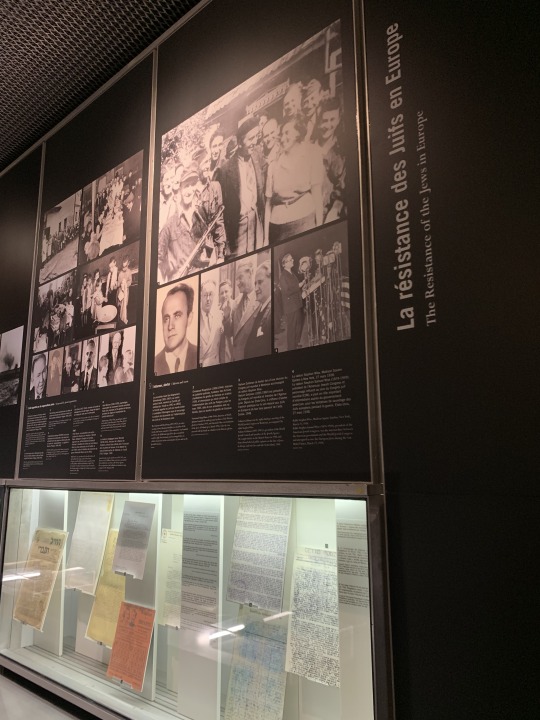
As I mentioned, the narrative of the permanent exhibit was really impactful to my understanding of how the French view this part of their history. I thought that this exhibition portrayed the narrative and story of the French influence/impact during the Holocaust. This exhibit was very informative, yet I found myself needing to take a break from attempting to translate and understand the information because it was quite heavy, especially towards the middle of the exhibit. The beginning of it was some backstory but heavily focused on the Germans and how they began the war, while the end was about how the French healed from the war and ended with a room of images to remember the people. The middle struck me the most because it discussed the narrative of French perseverance. There was a section about resistance groups and a section purely telling the stories of the people during the war. I loved that this area allowed you to interact with history, actually hearing the people tell their story (or a family member if the person didn’t survive). This entire exhibit struck a chord with my history-minded self because the French acknowledged their mistakes and celebrated the people who persevered. It was also very cool that they acknowledged how the areas that they had colonized were affected and how they reacted to the war. This narrative is quite striking for a museum like this. I learned how the French choose to memorialize this time period, but also I learned about the war from a French perspective which was different than I have been taught in the US. The primary lessons are those of perseverance, but also another lesson was how important it is to remember all the aspects of the event. Remembering not just the stories of the people in power or the government, but the stories of the people who actually lived it. They chose to preserve how their people persevered through such a difficult time in global history. As much as this exhibit displayed this narrative, I think the whole museum pointed to these ideas as well. The history being told here is the history of the French, and I really appreciate that I had the opportunity to interact with the narrative that they chose to memorialize in their memorial to the survivors.
Source: http://www.memorialdelashoah.org/en/the-memorial/presentation/the-history-of-the-shoah-memorial.html
2 notes
·
View notes
Text
Abstract Impressionism
Do you ever walk into an exhibition in an art museum and suddenly everything makes sense? That’s how I felt about the exhibition The Water Lilies: The American Abstract Art and the Last Monet at the Musée de l’Orangerie.

The Orangerie is a very small museum, but houses Claude Monet’s immense Water Lilies paintings. These paintings, which are part of the museum’s permanent collection, depict his flower garden at his home in Giverny. He worked on them from 1914 until his death in 1926. Presented to the public in 1927, they attracted little attention and were largely ignored by critics. It wasn’t until after World War II, as Abstract Expressionism was taking root, that interest in his work rekindled once more.

The Water Lilies: The American Abstract Art and the Last Monet is a temporary exhibition that juxtaposes Monet’s paintings with those of American Abstract Expressionists like Jackson Pollock, Mark Rothko, and Joan Mitchell. Before walking through this exhibition, I had never made the connection between the way that Monet (the founder of French Impressionist painting) painted and the way that the Abstract Expressionists painted. I knew certainly that Impressionism had set the stage for much contemporary art, but I had never considered the incredibly direct influence that Monet had until I saw these paintings next to each other. Then it all made sense.
The spontaneity you see in Monet’s paintings, the broad brushstrokes, the loose forms; all of this is reflected in the paintings of Pollock and his contemporaries. They transcend the “optical realism” of objects; they depict feeling and emotion gesturally as opposed to figuratively. The artist’s hand is so readily present in all of these works; Monet’s movements are just as noticeable in his Water Lilies as Pollock’s are in his drip paintings.

Most art historians like to have definite time periods set for art movements; I do not. To me, that’s the incredible thing about art history, that every movement flows into the next one. There is overlap everywhere. Why do we feel the need to define the boundaries of creativity? Art movements are not all-encompassing either. Just because some Impressionists were painting one way, for instance, does not mean every artist during that time was painting that way too. Even the name “Impressionism” was originally a derogatory description.
Looking at this exhibition, outside of the boundaries of definite time, it became so clear to me how Monet was truly the bridge between Impressionism and abstract art. Seeing these works all in dialogue with each other has caused me to rethink how I view other art movements, and to consider how I can be a better art historian because of it.





Sources
http://www.musee-orangerie.fr/en/article/history-water-lilies-cycle
Orangerie brochure
Exhibition pamphlet
1 note
·
View note
Text
Memory
Anther solemn memorial site I visited during my time here in Paris was the Arc de Triomphe. This incredibly beautiful structure is a product of Emperor Napoleon. In taking about thirty years to complete at the beginning of the nineteenth century, the purpose of the arc was to pay homage to those who passed in the French Revolution and other wars under Napoleon.

The structure and style of the arc was heavily inspired by the Arch of Titus in Rome. This shows Napoleon’s desire to look back at the Roman Empire, beyond the Catholic monarchy that the French Revolution fought against.
From my light research on Wikipedia, I learned that the four main sculptures on the pillars of the arc display representations of history that occured during the construction of the arc. The first sculpture of 1792 represents the rising of the First French Republic. Liberty shown here, winged and with a sword in hand which reminds me of Delacroix’s depiction in Liberty Leading the People.

The second sculpture represents the Treaty of Schönbrunn in 1810. Napoleon is depicted in the center as he is being crowed by the goddess of victory. Lady Liberty is shown above with wings. A trumpet and scroll in her hands further emphasize the victory.

The third and fourth sculptures were created by the same artist, Antoine Étex. The third shows the French resistance if 1814. Intensity and movement are depicted in the forms. It was unclear to me whether Liberty was once again depicted at the top of this sculpture, or if a male angel-like figure is shown. Finally, the fourth sculpture represents the Treaty of Paris in 1815 and is titled La Paix or The Peace. The forms that Étex showed in struggle before are much more calm in this sculpture. Liberty only has a scroll in hand to represent the Treaty, and instead of wings of feathers, she has wings of flowers and plants.

When visiting the Arc, I was able to see a changing of the guards ceremony for the Tomb of the Unknown Soldiers. It was nice to see the monument in a light that rightfully showed it’s function. In seeing the ceremony, the Arc was more than a cool spot in the city.

Unlike the way Place de la Concorde covered up the past of the guillotine, or the way the Immigration Museum fails to address and educate about the racist past that literally covers the walls, the Arc was a memorial piece preserving the crucial and intense nature of the French Revolution.
3 notes
·
View notes
Photo

“Lost and Found” #parisstory #travelgram #paris #capturedbyhart #travel #somewhere (bij Paris, France)
0 notes